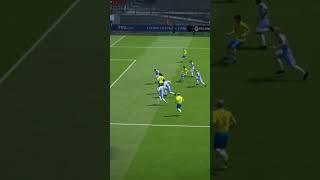
Why Some Think Ball Pythons Do Better In Racks
Lori Torrini is a animal behaviourist who specialises in snake cognition and training. In this episode we focus on ball pythons and dispel some of the myths around the species whilst picking the brain of someone who has unlocked her pythons potentials.
WATCH THESE NEXT:
https://youtube.com/playlist?list=PL6WNJO0jWkuKiWYQz0uyzr4hrekk2Pzr5
JOIN US ON PATREON FOR £1: https://www.patreon.com/ReptilesandResearch
CHECK OUT OUR MERCH STORE: https://reptilesandresearchstore.com
CUSTOM REPTILE HABITATS:
https://customreptilehabitats.com?sca_ref=1243605.vkGok8F1Gf
THE REPTILE MERCH STORE:
www.thereptilemerchstore.com
ANIMALS AT HOME NETWORK: https://www.animalsathomenetwork.com
Some of the links are affiliate links, which means that if you choose to make a purchase, I will earn a commission. This commission comes at no additional cost to you. Please understand that I have experience with all of these products, and I recommend them because they are helpful and useful, not because of the small commissions I make if you decide to buy something.
ABOUT LIAM:
Hello, my name is Liam, I am first and foremost a fanatic reptile enthusiast, I have a bachelor’s degree in animal management, this is where my interest in research stems from. My mission with this channel is to investigate herpetological husbandry with a scientific mindset and champion an evidence-based approach to reptilian husbandry, centred around animal welfare science.
Тэги:
#Reptiles #reptiles_and_research #HERPETOCULTURE #herpetological_husbandry #husbandry #care #reptile #reptiles_and_research_podcast #animals_at_home #animals_at_home_network #lori_torrini #ball_python #royal_python #python_regiusКомментарии:

Great clip! Going to watch the longer interview now. I feel like this applies to lighting too. I've had so many customers claim that their ball python will not eat after switching from a red heat lamp to a clear one.
Ответить
These channels need to keep going with info like this, to much bad info out there
Ответить
BP, don't do better in rack....they juste do....
Ответить
Hey everyone I would love anyone’s advice here; I’ve got a ~9 month old male that has been on feeding strike for about ~4.5 months. He is slim, but not emaciated. Environmental specs are perfect.
He came from a rack breeder. When I first got him I put him in a bioactive viv with lots of enrichment. He started eating great for the first couple months I had him. Once he stopped eating I eventually put him in a sterile, smaller, darker bin set up. Still loads of cover and coco husk. It’s been a month in the new set up and still no feeding response.
What hasn’t worked: live mouse, f/t mice/rats, braining a mouse. I think I’ll try the chicken broth method next, a f/t asf, or possibly offering reptilinks next.
My other 9 royals are all doing great, I just cannot figure out why this young male won’t eat. If he stays on strike much longer I’m going to have to send him back to his breeder to hopefully get him re-established.
I would love any pointers or advice!

Very interesting take, I agree 👍
Ответить
I mean, yeah, when breeders/rack keepers say that their snakes dont climb and they get stressed out in large spaces with lots of light, and that they've been keeping their snakes in tubs for 20 years, they're right! Because they've lost the ability to thrive in that environment- the neural network isnt there anymore. So the transition to a proper set up is going to take much longer for the snake to literally require its brain to function properly and not be stressed out all the time in a proper, stimulating environment. It's sad.
Ответить
This makes sense! I think about the dogs rescued from puppy mills that never see grass or have positive and regular humans and other dog interaction. They're stressed and don't know how to dog. It sometimes takes years for them to figure out how to play!
Ответить
Excellent interview clip.
Ответить
It's amazing how much neurotic/disfunctional behavior from ball pythons has been dismissed as species specific behavior by the rack keepers that caused it. If anything, the fact that ball pythons do become neurotic and have a harder time learning how to be a normal snake the longer they are kept in a rack, it indicates to me, they ARE intelligent and learn quite a bit of their behavior, being generalist, for that behavior to impacted so much for how they are kept and for how long.
Ответить
Good call clipping this part. I'm sure theres plenty more you can break up to make it more visible.
Ответить
Fascinating information! I love how science can help us to understand why our snakes behave the way they do!
Ответить
Sorry, this will be harsh:
Sadly, this is NOT science. This is a person who has opinion on how things work, based on their general (probably not very precise) understanding of the subject - and presents it, as it were facts. Which they aren't, because there are no professional publications (of course, as always with the caveat: that I'm aware of - but I'd really like to look at the ones that I could've missed) that would back all that up, in specifity, and in a causal way.
There are a lot of words in this interview that sound professional, and it may sound inherently coherent, but science is not about sounding in a certain way, or asserting hypothesis that just sound ok, as true.
Amount of work that would require to prove (beyond reasonable doubt) all these assertions, is quite colossal (and far from done, yet).
To be as certain as asserted how it mechanically works, it would be required to point where in the brain, certain innate behaviour is stored (person intervieved DOESN'T know it - that's a very general guess, based on some general understanding of concepts), and this connection should then be observed if even - and if: how, and under which circumstances, the environment could affect this storage in a relevant way (sure, in general, >new, learned< behaviour patterns require estabilishing new synaptic connections, and reinforcing them over time - but you can't extrapolate just the rules of that, to all innate behaviours in such way - and any perceived change of innate behaviour, outside the scope of a planned experiment, is just far from explanatory, as it may be affected in other ways than "atrophy").
Interview could be fine, if person "explaining" the subject would be honest and properly frame this as exploring the subject, with the exception: "this is what I think may be happening, based on my limited understanding of the subject, and here is, why I think this way".
Instead this looks like retrofitted, deductive reasoning, presented as science, and no good intentions would make it right (I don't doubt that they were good).
Having interesting hypothesis, exploring ideas, and being curious is just great, but this differs GREATLY from asserting such as facts and "science", from the position or appearance of authority in the subject - because doing that in this manner, is just misinformation.

Great interview overall, but this clip probably has the very best info from that conversation, Imo.
I have to talk to the breeder I got my ball python from to see what the heck he does. I got him at 8 months old, and I know the breeder kept him in a rack. Despite that, my snake is and since I've had him has always been confident, curious, a great eater, and an aggressive hunter. He says all his snakes are like that - in his words, "great eaters and hard to stress out."
To highlight that point, I met him in person for the sale after talking for a couple of days about his different snakes, my setup, tips on what to adjust, etc. With the snake, he gave me a very small rat (a large meal for him at the time). He told me to go ahead and feed him that same night, and btw, he'd never had a rat before. He gave me the rat because I was torn between mine and a larger snake, so he brought a feeder that would be large for one and small for the other. So new house, new enclosure, all new smells, new prey item. I thought the breeder was crazy, because that's the opposite of what everything online said. But he said that if the snake didn't eat, he would exchange the snake for another one or give me my money back the next day. So I put the rat in the tub and the snake stalked, struck, and ate that thing like it was his daily routine. No regurge, has never missed a meal, I'll feed him a mouse one week, a rat the next, and he doesn't discriminate.
I'm going to offer him f/t in the next couple of weeks, and I expect that to also go easily. My only concern is if he'll take a f/t chick or quail. I'll never stop live feeding him completely, since I believe that hunting live prey is valuable enrichment. That said, I'd like to feed him variety, but I don't have access to any other feeders than rodents live.

It’ll be a cold day in Hell before I keep a living sentient being in a glorified drawer.
Ответить
Personally I think that is brutal to keep snakes in small plastic (pvc?) drawers, really bad
Ответить
Where do you think all ball pythons that are sold in reptile shops come from? Breeders who use rack systems show me a breeder of ball pythons that breed in vivs in UK the price would be higher for the babies. Breeders of leopard geckos, hognose,kingsnakes also use racks i dont hear you having a go at them . Why also did you not debate about the part of dav’s ball python film about the fetish markets where ball pythons would be sold if breeders decided to stop breeding them? I have 25 ball pythons only one does not like being handled the rest i handle 1-2 times a week none show defensive behaviour and i get them use to being touched from head to tail.
Lets also remember the pythons breed are all cb they have never been in the wild take dogs they are so far removed from their ancestors man as destroyed what they once were. All canines are meant to move daily and in the wild they will cover many miles what do we do with pet dogs. Keep them in a house feed them unnatural food and break their spirit by makingbthem do as we tell them ie sit,wait etc which is unnatural for them. That is worse then keeping ball pythons in racks keep attacking ball python breeders and you will get no where.
I did not hear Lorri mention the Super dwarf that she got from Out Reach Reptile who breeds them in racks. What about ppl who take Boeleen Pythons out wild and sell them from 5-10k is that right surely that is money driven because their are cb ones that come up for sale now and again.

I love this video. You can extrapolate this on every other animal, including humans.
Ответить
There's an old saying that applies here. You can drive a car with your feet, but it doesn't make it an intelligent or effective option.👍🏾🪖🦅🇺🇸
Ответить
So I take it you all have glass enclosures for all your snakes? Because see, I have nearly 300 ball pythons, and to have a glass enclosure for each of them would be outright stupidity for a multitude of reasons.
Also, Ball pythons come from West Africa where in their natural habitat, they take over small rat holes as their home. This is why each of you have spent a stupendous amount of money on a glass enclosure, all for your snake to spend 90% of its time in a hide. They love the dark space. Long as there is belly heat, clean water, humidity, and food, they are happy. This is why most rack keepers don't have the feeding issues that enclosure keepers run into. They stop eating because they are not happy. I keep a log of all my snakes eating habits. My adult males or females may miss a few meals during breeding season, but that's it. If you have only 1-5 snakes, sure have fun with your giant tanks. But for guys and ladies like me that have anywhere from double digits to triple digits in snakes, rack system is the only way to go. This woman is spouting her opinion, not fact.

So i agree with all of this and this was such a nice clip and so educational. My question is this, how do we breed to keep the hobby going if not in racks? I mean if someone keeps their pet in a rack is just doing it because its more convent for them not the animal and in my eyes just cruel. But again my question is what's the alternative to racks, because breeding in enclosures has a very low success rate and is just not practical with someone that has a 200 snakes that they breed. Do we just stop breeding all together? Would this benefit the hobby or kill it? These are the questions that bother me all the time.
Ответить
Regardless , I feel snakes should have an environment that stimulates their basic senses whether that's in a rack or not. Touch ,smell, sight etc. This would (in my opinion) enhance the snakes quality of life.
Ответить
Typically you would be correct and i dont believe a life without stimuli is inherently good, but ball pythons are not like other species of animal or even like other snakes.
They 100% prefer to be hiding in a small dark hole 95% of the time. This has been proven and demonstrated over and over. Of the hundreds of ball pythons observed in the wild, only a small few were ever found outside of a burrow of some kind, when under close observation for extended periods of time, they only ever left their burrows for brief spurts of time out of necessity like finding food or escaping flooding.
Even when given the world to explore and stimulate them they choose a small dark hole. The best simulation in a captive environment is to keep them in racks or tubs most of the time, and occasionally bring them out for "enrichment and exercise".
You can attach all the emotion and comparisons and sciencey talk you want but ball pythons are unique and not like other animals. Thats why you mostly only hear about feeding or stress issues when one is in a large or overly stimulating enclosure or when they receive too much handling. You cant cite one type of science and completely ignore another more relevant one thats not convenient to your narrative.

I think it’s obvious a large enclosure with lots of places to climb, hide, big enough water to soak etc.. of course this is the better option .
However her reasoning, logic, etc I don’t quite agree with. She is speaking about raising a reptile as if it’s a mammal.. I do believe reptiles are capable of far greater levels of learning, and intelligence than what we have given them credit for.. but I don’t believe they need to be prepared for life, 99% of snakes are miniature versions of adults when they are born, aside from coloration and ability to reproduce.. they survive just fine, and aside from being able to occupy different biomes due to size, they generally act exactly the same…

I have converted my Spider BP enclosure to Bioactive and given her so much more in the enclosure and watching my snake snake is the best thing. She comes out at least once a day to explore and climb. I'm currently making a frame for her to climb and new hide for her which will have a climb in entrance so won't be a simple slither to up that enrichment level. She has changed so much which made me think the same as this video so it awesome to see it backed up. Also feeds into the buying from a breeder and bringing home were you need to keep them in something smaller and build them up to not be scared of this new big enclosure. Fascinating video dude
Ответить
Hahahaha you sound and look like a reddit mod, a cucked soyboy.
Ответить
I didn't notice a ring on her finger.
Ответить
Woah, it’s almost like solitary confinement negatively affects the brains of things that have brains.
I don’t know why humans are so resistant to believing in animal cognition.

Further reading:
Brian Forquer Almli, L. M., & Burghardt, G. M. (2006). Environmental enrichment alters the behavioral profile of ratsnakes (Elaphe). Journal of Applied Animal Welfare Science, 9(2), 85-109.
Antonov, I., Antonova, I., Kandel, E.R., and Hawkins, R.D. (2001). The contribution of activity-dependent synaptic plasticity to classical conditioning in Aplysia. J. Neurosci. 21: 6413–6422.
Brando, S., & Buchanan-Smith, H. M. (2018). The 24/7 approach to promoting optimal welfare for captive wild animals. Behavioural Processes, 156, 83-95.
Burghardt, G. M. (2013). Environmental enrichment and cognitive complexity in reptiles and amphibians: Concepts, review, and implications for captive populations. Applied Animal Behaviour Science, 147(3-4), 286-298.
Divers, S. J., & Stahl, S. J. (Eds.). (2018). Mader's Reptile and Amphibian Medicine and Surgery. Elsevier Health Sciences, pages 922-931.
Eberhard Fuchs, Gabriele Flügge, "Adult Neuroplasticity: More Than 40 Years of Research", Neural Plasticity, vol. 2014, Article ID 541870, 10 pages, 2014.
Emer, S. A., Mora, C. V., Harvey, M. T., & Grace, M. S. (2015). Predators in training: operant conditioning of novel behavior in wild Burmese pythons (Python molurus bivitattus). Animal cognition, 18(1), 269-278.
Finlay, B. L., & Darlington, R. B. (1995). Linked regularities in the development and evolution of mammalian brains. Science, 268(5217), 1578-1584.
Fuchs, E., & Flügge, G. (2014). Adult neuroplasticity: more than 40 years of research. Neural plasticity, 2014.
Groh, C. and Rössler, W. (2020). Analysis of synaptic microcircuits in the mushroom bodies of the honeybee. Insects 11: 43.
Hoehfurtner, T., Wilkinson, A., Nagabaskaran, G., & Burman, O. H. (2021). Does the provision of environmental enrichment affect the behaviour and welfare of captive snakes? Applied Animal Behaviour Science, 239, 105324.
Holding, M. L., Frazier, J. A., Taylor, E. N., & Strand, C. R. (2012). Experimentally altered navigational demands induce changes in the cortical forebrain of free-ranging Northern Pacific Rattlesnakes (Crotalus o. oreganus). Brain, behavior, and evolution, 79(3), 144-154.
Hollandt, T., Baur, M., & Wöhr, A. C. (2021). Animal-appropriate housing of ball pythons (Python regius)—Behavior-based evaluation of two types of housing systems. Plos one, 16(5), e0247082.
Holtmaat, A. and Svoboda, K. (2009). Experience-dependent structural synaptic plasticity in the mammalian brain. Nat. Rev. Neurosci. 10: 647–658.
Jacobs, B., Rally, H., Doyle, C., O’Brien, L., Tennison, M., & Marino, L. (2021). Putative neural consequences of captivity for elephants and cetaceans. Reviews in the Neurosciences.
Lupien, S. J., McEwen, B. S., Gunnar, M. R., & Heim, C. (2009). Effects of stress throughout the lifespan on the brain, behaviour and cognition. Nature reviews neuroscience, 10(6), 434-445.
Magee, J. C., & Grienberger, C. (2020). Synaptic plasticity forms and functions. Annual review of neuroscience, 43, 95-117.
McEwen, B.S., Nasca, C., and Gray, J. (2016). Stress effects on neuronal structure: hippocampus, amygdala, and prefrontal cortex. Neuropsychopharmacology 41: 3–23.
Mitra, R., Jadhav, S., McEwen, B.S., Vyas, A., and Chattarji, S. (2005). Stress duration modulates the spatiotemporal patterns of spine formation in the basolateral amygdala. Proc. Nat. Acad. Sci. USA
102: 9371–9376.
Nagabaskaran, G., Burman, O. H., Hoehfurtner, T., & Wilkinson, A. (2021). Environmental enrichment impacts discrimination between familiar and unfamiliar human odours in snakes (Pantherophis guttata). Applied Animal Behaviour Science, 237, 105278.
Naumann, R. K., Ondracek, J. M., Reiter, S., Shein-Idelson, M., Tosches, M. A., Yamawaki, T. M., & Laurent, G. (2015). The reptilian brain. Current biology: CB, 25(8), R317–R321.
Pogliano, C. (2017). Lucky Triune Brain: Chronicles of Paul D. MacLean’s Neuro-Catchword. Nuncius, 32(2), 330-375.
Salvanes, A. G., Moberg, O., Ebbesson, L. O., Nilsen, T. O., Jensen, K. H., & Braithwaite, V. A. (2013). Environmental enrichment promotes neural plasticity and cognitive ability in fish. Proceedings. Biological sciences, 280(1767).
Spain, M. S., Fuller, G., & Allard, S. M. (2020). Effects of habitat modifications on behavioral indicators of welfare for Madagascar giant hognose snakes (Leioheterodon madagascariensis). Anim. Behav. Cogn, 7, 70-81.
Tosches, M. A., Yamawaki, T. M., Naumann, R. K., Jacobi, A. A., Tushev, G., & Laurent, G. (2018). Evolution of pallium, hippocampus, and cortical cell types revealed by single-cell transcriptomics in reptiles. Science, 360(6391), 881-888.
Warwick, C., Grant, R., Steedman, C., Howell, T. J., Arena, P. C., Lambiris, A. J., ... & Wilson, A. (2021). Getting It Straight: Accommodating rectilinear behavior in captive snakes—A review of recommendations and their evidence base. Animals, 11(5), 1459.


























